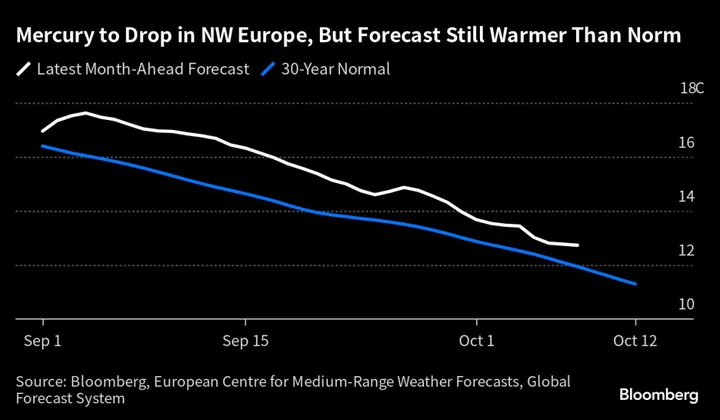
Disturbing cache of elongated human skulls discovered in flooded Mexican sinkhole
When archaeologists explored an underwater cavern in southern Mexico in 2014, they were shocked by what they found. The cavern is known as Sac Uayum, and is located in Mexico’s Yucatán peninsula. It is technically a cenote – a natural pit that comes about after limestone bedrock collapses, exposing groundwater beneath. Local villagers were said to be terrified of the spot, because pits like this were sometimes used by the ancient Maya for sacrificial offerings. Archaeologist Bradley Russell, from College of St Rose, and a group of divers scaled down roughly 20 metres into the unknown. Inside the pit were two chambers with human bones and skulls scattered across the floors of each. The skulls were elongated, as part of an ancient practice that is thought to have involved flattening people’s heads during infancy. Archaeologists still don’t know why the ancient culture did this – but it ain't pretty. The cenote sits just outside the ruins of the ancient Maya city of Mayapán, and the researchers think this shows that, like the modern day locals, the ancient Mayans kept their distance too. Local legend says that Sac Uayum is guarded by a feathered, horse-headed serpent. Older residents of the nearby village of Telchaquillo tell stories of people seeing the serpent perching in a tree, leaping up, spinning around three times, and diving into the water. Russell explained to National Geographic that the sinkhole is said to be “evil”. “To this day, people do not get drinking water from that cenote, it is generally considered taboo. “It’s off-limits, people do not let their children plan near there and there’s a lot of beliefs around this cenote having evil forces or malevolent forces associated with it. “Cenotes are important because the main access to the water that you get is through these sinkholes. “They are also believed to be access to the Mayan underworld and the homes of Gods. “Mayapan is a large city, it’s incredibly dense, there’s nothing like it in the classic period, it’s incredibly dense for Maya history, there’s nothing quite like it.” He added that the location of Sac Uayum – south of Mayapan – is a clue as to what was going on. In Maya beliefs, south is the direction associated with the underworld. Alternatively, Russell also suggested they could have been plague victims. "You wouldn't want them near the rest of the population. And you wouldn't want to drink the water either.” How to join the indy100's free WhatsApp channel Sign up to our free indy100 weekly newsletter Have your say in our news democracy. Click the upvote icon at the top of the page to help raise this article through the indy100 rankings.
2023-11-30 03:43

Social media CEOs to testify at US Senate hearing in January
WASHINGTON The chief executives of social media companies Meta, X, TikTok, Snap and Discord will testify on online
2023-11-30 03:26

Water discovered leaking from Earth's crust into the planet's core
There is much we still don’t know about the inside of our planet – but scientists recently discovered water is slowly leaking down there from the surface. It’s not a simple journey. The liquid is dripping down descending tectonic plates, before eventually reaching the core after a 2,900 kilometre journey. And while the process is slow, it has over billions of years formed a new surface between the molten metal of the outer core and the outer mantle of the Earth. In a new study, scientists at Arizona State University have said the water is triggering a chemical reaction, creating the new layer, which is “few hundred kilometres thick”. (That’s “thin” when it comes to the inner layers of the Earth.) “For years, it has been believed that material exchange between Earth's core and mantle is small. Yet, our recent high-pressure experiments reveal a different story. “We found that when water reaches the core-mantle boundary, it reacts with silicon in the core, forming silica," co-author Dr Dan Shim wrote. “This discovery, along with our previous observation of diamonds forming from water reacting with carbon in iron liquid under extreme pressure, points to a far more dynamic core-mantle interaction, suggesting substantial material exchange.” So what does it mean for all of us up on the surface? The ASU release said: “This finding advances our understanding of Earth's internal processes, suggesting a more extensive global water cycle than previously recognised. “The altered ‘film’ of the core has profound implications for the geochemical cycles that connect the surface-water cycle with the deep metallic core.” How to join the indy100's free WhatsApp channel Sign up to our free indy100 weekly newsletter Have your say in our news democracy. Click the upvote icon at the top of the page to help raise this article through the indy100 rankings.
2023-11-30 02:47

Bitcoin consumes as much water as all the baths in Britain, study claims
Bitcoin mining requires as much water annually as all of the baths in Britain, according to a new analysis of the cryptocurrency’s environmental impact. Financial economist Alex de Vries, who runs the Bitcoin Energy Consumption Index, estimated that roughly 1.6 trillion litres of water each year is required to cool the computers used to support the cryptocurrency’s network. Separate research from 2018 found that 1.6 trillion litres is how much bath water the British public sends down the plughole every year – enough to fill roughly 660,000 Olympic-sized swimming pools. The latest analysis, which was published in the journal Cell Reports Sustainability on Wednesday, suggested that a single bitcoin transaction could use as much water as a backyard swimming pool. “Many parts of the world are experiencing droughts, and fresh water is becoming an increasingly scarce resource,” said Mr de Vries. “If we continue to use this valuable resource for making useless computations, I think that reality is really painful.” The “useless computations” refer to the complex calculations required to mint new units of the cryptocurrency and verify transactions on the network. The use of water to cool the necessary hardware could be significantly reduced if miners shifted their operations underwater, with companies like Microsoft already placing some of their data centres in the ocean in order to cool them. Earlier this month, China announced that it had begun building the world’s largest underwater data centre in order to reduce electricity and water costs. Bitcoin has previously been criticised for its electricity consumption, with Mr de Vries’s Energy Consumption Index estimating that the cryptocurrency’s network uses roughly as much electricity as the country of Poland. Bitcoin advocates have refuted accusations relating to bitcoin’s electricity consumption, claiming that miners are increasingly turning to renewable energy sources as the costs of wind and solar drop. A recently published study suggests bitcoin mining could actually help speed up the transition to renewable energy, as solar and wind energy installations could earn hundreds of millions of dollars mining bitcoin during periods of excess electricity generation. ”These rewards can act as an incentive for miners to adopt clean energy sources, which can lead to combined positive effects on climate change mitigation, improved renewable power capacity, and additional profits during pre-commercial operation of wind and solar farms,” said Apoorv Lal, a doctoral student at Cornell University who was involved in the research. Read More Bitcoin mining could supercharge transition to renewables, study claims Bitcoin mining rate hits all-time high amid record-breaking prediction for 2024 Elon Musk scam ads appear on X as key advertisers depart Scientists find planets moving around in strange ‘rhythm’ Astronomers find unprecedented ‘disc’ around distant planet Scientists have cooked ‘alien haze’ that could help find life
2023-11-30 00:15

Scientists find six planet system where stars orbit in rhythmic beat
Astronomers have found a planetary system with six different worlds that orbit in a strange rhythm. The set of planets move around their star in a rhythmic beat, scientists say, staying synchronised in a kind of dance. The findings could help shed more light on how planets form and evolve, the researchers say. The star is smaller, and slightly dimmer than the Sun, and the six “sub-Neptunes” - possibly smaller versions of Neptune in our solar system - move in a cyclic rhythm. According to the experts, this orbital waltz repeats itself so precisely it can be readily set to music. The star, HD110067, is 100 light-years away in the northern constellation of Coma Berenices, and had perplexed researchers for years. Now scientists, including those at the University of Warwick, have revealed the true architecture of this unusual system using Nasa and European Space Agency (Esa) spacecraft. The analysis was led by University of Chicago scientist Dr Rafael Luque, who said: “This discovery is going to become a benchmark system to study how sub-Neptunes, the most common type of planets outside of the solar system, form, evolve, what are they made of, and if they possess the right conditions to support the existence of liquid water in their surfaces.” The first indication of planets orbiting the strange star system came in 2020, when Nasa’s Transiting Exoplanet Survey Satellite (Tess) detected dips in the star’s brightness which suggested planets were passing in between the star and the spacecraft. A preliminary analysis revealed two possible planets - one with a year (the length of time it takes to complete one orbit around the star) of 5.64 days, and another with an unknown period at the time. Two years later, Tess observed the same star again, and analysis ruled out the original interpretation but presented two additional possible planets. Much was still unknown about the planetary system, until scientists across the world - including those at the University of Warwick - joined the investigation. They used data from Esa’s Characterising Exoplanet Satellite (Cheops), hoping to determine the orbital periods of these faraway planets. While multi-planet systems are common in the Milky Way, those in a tight gravitational formation known as “resonance” are observed by astronomers far less often. In this case, the planet closest to the star makes three orbits for every two of the next planet out - called a 3/2 resonance - a pattern that is repeated among the four closest planets. Among the outermost planets, a pattern of four orbits for every three of the next planet out (a 4/3 resonance) is repeated twice. Thomas Wilson, from the Department of Physics at the University of Warwick, said: “By establishing this pattern of planet orbits, we were able to predict other orbits of planets we hadn’t yet detected. “From this we lined up previously unexplained dips in starlight observed by Cheops and discovered three additional planets with longer orbits. This was only possible with the crucial Cheops data.” Researchers say the planets - two to three times the size of Earth - are likely to have been performing this same rhythmic dance since the system formed billions of years ago. Dr Luque said: “We think only about 1% of all systems stay in resonance, and even fewer show a chain of planets in such configuration.” Experts say orbitally resonant systems are extremely important to find because they tell astronomers about the formation and subsequent evolution of the planetary system. Planets around stars tend to form in resonance but can easily have their orbits thrown around. For example, a very massive planet, a close encounter with a passing star, or a giant impact event can all disrupt the careful balance. Therefore, multi-planet systems preserving their resonance are rare. HD110067 is the brightest known system with four or more planets. Since those planets are all sub-Neptune-sized with likely larger atmospheres, it makes them ideal candidates for studying using the James Webb Space Telescope (JWST) and the Esa’s future Ariel telescope. Mr Wilson added: “All of these planets have large atmospheres - similar to Uranus or Neptune - which makes them perfect for observation with JWST. “It would be fascinating to test if these planets are rocky like Earth or Venus but with larger atmospheres - solid surfaces potentially with water. “However, they are all much hotter than Earth - 170C to 530C - which would make it very difficult for life to exist.” Hannah Osborne, a PhD student at UCL’s Mullard Space Science Laboratory and a co-author of the study, said: “The system itself is a key discovery for exoplanet science: because all six planets are in a resonant chain we know that the architecture of the system can’t have changed much since its formation, so by studying HD110067 we get a rare window into the past to understand how these types of systems may have formed and evolved.” The findings are published in the Nature journal. Additional reporting by Press Association Read More Astronomers find unprecedented ‘disc’ around distant planet Astronomers discover new six-planet system Scientists have cooked ‘alien haze’ that could help find life Astronomers find unprecedented ‘disc’ around distant planet Astronomers discover new six-planet system Scientists have cooked ‘alien haze’ that could help find life
2023-11-30 00:02

Astronomers find unprecedented ‘disc’ around distant planet
Scientists have found the first ever disc structure around a star outside of our own Milky Way. The disc is around a young massive star forming in a stellar nursery called N180. It is within the Larg Magellanic Cloud, a dwarf galaxy that neighbours ours. The disc is 163,000 light years from Earth – meaning that it is not only the first to be detected outside of our galaxy, but also the most distant such disc ever seen. Lead author of the study, Dr Anna McLeod from Centre for Extragalactic Astronomy, Durham University said: “When I first saw evidence for a rotating structure in the ALMA data, I could not believe that we had detected the first extragalactic accretion disc; it was a special moment. “We know discs are vital to forming stars and planets in our galaxy, and here, for the first time, we’re seeing direct evidence for this in another galaxy. “We are in an era of rapid technological advancement when it comes to astronomical facilities. “Being able to study how stars form at such incredible distances and in a different galaxy is very exciting.” The findings are reported in a new article, ‘A likely Keplerian disk feeding an optically revealed massive young star’, published in Nature. Read More Scientists find planets moving around in strange ‘rhythm’ Astronomers discover new six-planet system Scientists have cooked ‘alien haze’ that could help find life
2023-11-30 00:01

One trillion tonne iceberg escapes from Antartica and is gaining speed
The world’s biggest iceberg is drifting away from the Antarctic after having been grounded there for more than 30 years. The iceberg, which has the catchy name A23a, split from the Antarctic’s giant Filchner Ice Shelf in 1986, but has been stuck to the ocean floor since shortly after that time. Now, according to the British Antarctic Survey, it is on the move. Satellite images show the iceberg drifting past the northern tip of the Antarctic Peninsula. A23a is truly massive. It weighs nearly a trillion metric tonnes and is about three times the size of New York City. It is more than twice the size of Greater London. Scientists say the massive chunk of ice is drifting at a rate of three miles each day. “Over time, it’s probably just thinned slightly and got that little bit of extra buoyancy that’s allowed it to lift off the ocean floor and get pushed by ocean currents,” said Oliver Marsh, a glaciologist at the British Antarctic Survey. Andrew Fleming, a remote sensing expert from the British Antarctic Survey, told the BBC the iceberg had been drifting for the last year, but now appeared to be picking up speed. “I asked a couple of colleagues about this, wondering if there was any possible change in shelf water temperatures that might have provoked it, but the consensus is the time had just come,” he said. Still, some scientists are concerned about how the movement could affect wildlife. The iceberg could end up at the island of South Georgia, which is about 1,000 miles east of the southern tip of South America, which is home to seals, penguins and other seabirds. Chad Greene, a glaciologist at NASA’s Jet Propulsion Laboratory, told the New Scientist large icebergs tend to break off from Antarctica around once per decade. They then get stuck in the Antarctic’s nearly freezing waters, which staves off the melting process, but only for a while. “Icebergs this big can hang around for decades in one place, then one day decide to go for a jolly,” Greene said. “That’s when things get interesting.” How to join the indy100's free WhatsApp channel Sign up to our free indy100 weekly newsletter Have your say in our news democracy. Click the upvote icon at the top of the page to help raise this article through the indy100 rankings.
2023-11-29 22:01

How to see your Spotify Wrapped for 2023?
It's almost that time of year again, when we see how many hours we've shamelessly spent listening to mortifying music and just playing Taylor Swift on loop. Yes, Spotify Wrapped is here again and soon your social media feeds will be full of people either showing you how cool by how much Senegalese lounge Jazz they listen to or embarrassed that they still haven't moved on from The Libertines or The Strokes. Each and every year, even for the most dedicated of music lovers, Spotify Wrapped throws up countless surprises in your top artists and songs leading many to question just how it tallies what you listen to. The past few years Wrapped has arrived earlier and earlier, as reported by the Radio Times, so it's not surprise that its arrived on November 29th. Here are the dates it arrived on the previous years. 2017: 6th December 2018: 6th December 2019: 5th December 2020: 2nd December 2021: 1st December 2022: 30th November Finding your Wrapped couldn't be easier you just need to go to your Spotify app on the day it drops and it'll be there waiting for you at the top of the app alongside your saved songs and albums. Alternatively, if you just use Spotify on a laptop or desktop you can visit spotify.com/wrapped and use it from there. Spotify have never officially said how they compile their data for Wrapped but a Reddit user in 2021 revealed how they believed it works. In the post Hudsonlovestech pointed out six key takeaways that they discovered after downloading their data from the music platform. They were: This year the data was logged from January 1st 00:00 to November 15th 23:59. You have to listen to a song for more than 30 seconds for it to count in your song rankings. Your top songs are calculated by play count rather than total time listened. In your top 100 playlist only the first 10 songs are sorted by play count, the rest are close but sorted by artist. Your total time listening includes podcasts. Your top artists are calculated by total play counts rather than total time listening. If you apply this date to your own listening history then there is a chance you might discover what your Wrapped will look like this year although there is no guarantee. Meanwhile, many users on X/Twitter are posting memes, imagining what their Wrapped will look like this year. To be honest, we're just dreading seeing how much we listened to Ryan Gosling sing 'I'm Just Ken' from the Barbie soundtrack. Sign up to our free indy100 weekly newsletter Have your say in our news democracy. Click the upvote icon at the top of the page to help raise this article through the indy100 rankings.
2023-11-29 21:32

Elon Musk scam ads appear on X as key advertisers depart
Adverts promoting crypto scams are appearing on X, formerly Twitter, amid an exodus of major brands from the platform. Many of the scam ads use the likeness of Elon Musk, who bought Twitter for $44 billion last year, to promote fake cryptocurrency giveaways. The scam ads work by promoting a fake pre-sale of “X Token”, which fraudulently offers early investors large profits if they buy the cryptocurrency before it officially launches on exchanges. Some of the adverts seen by The Independent have even appeared on the profile page of Elon Musk, who has 165 million followers on X – more than any other user. The scammers have paid for the sponsored posts, providing much-needed revenue for X as the company struggles with retaining traditional advertisers. Over 100 brands and other advertisers have pulled their ads from X in recent weeks, according to internal documents seen by The New York Times, which could lead to losses of around $75 million in earnings this year. The exodus reportedly began after Mr Musk engaged with a controversial tweet about an antisemitic conspiracy theory. The X owner responded to claims that he is antisemitic by saying “nothing could be further from the truth”. Companies to have withdrawn ads include Airbnb, Apple, Coca-Cola, Disney, IBM, Netflix and Uber. X disputed the figure reported, claiming it “represented an internal exercise to evaluate total risk” and that the true figure was closer to $11 million. The emergence of scam crypto ads has already resulted in significant financial losses for X users, according to the MalwareTips forum, with some victims reporting they lost their entire crypto savings. “The anonymity of cryptocurrency enables the scammers to quickly withdraw funds without being tracked down,” a post to MalwareTips notes. A twitter-hackers-cryptocurrency-a8620436.html">2018 investigation by The Independent found that crypto scams shared on Twitter had tricked people into sending hundreds of thousands of dollars to cyber criminals posing as Mr Musk. Hackers were able to take over Twitter accounts belonging to verified brands like Matalan and Pantheon Books, before switching the name and profile picture in order to impersonate the tech entrepreneur. They then posted messages offering fake giveaways that required people to send cryptocurrency in order to verify their bitcoin address. Analysis of the addresses found that more than 400 people sent bitcoin to one address, with transactions totalling 28.2 bitcoins ($1.1m at current exchange rates). Mr Musk cited the cryptocurrency scam epidemic as one of the motivating reasons for his purchase of Twitter, pledging to fix the issue upon his takeover. “If our Twitter bid succeeds, we will defeat the spam bots or die trying,” he tweeted in April 2022. In June 2022, Mr Musk also criticised YouTube for fake cryptocurrency promotions that featured on the platform. “YouTube seems to be nonstop scam ads,” he tweeted. Efforts to defeat the bot endemic have included subscriptions and a $1 charge to new users, which was introduced in New Zealand and the Philippines last month. The “Not a Bot” subscription method is designed to “reduce spam, manipulation or our platform and bot activity,” the company said at the time. It is not clear how this approach will prevent accounts from promoting crypto scams, with all of the ads seen in October and November coming from verified X accounts. X did not respond to a request for comment from The Independent about the issue of crypto scam ads. Read More Elon Musk mocked for trying to resurrect QAnon Pizzagate conspiracy Elon Musk set to meet Netanyahu and hostage families in Israel Elon Musk weighs in on Dublin riots claiming country’s PM ‘hates the Irish people’ X introduces limits to prevent non-paying users from replying to posts
2023-11-29 21:25

Scientists cook ‘alien haze’ that could help us find extraterrestrial life
Scientists have cooked up the "alien haze" of distant planets, in an effort to help with the search for alien life. The haze is a simulation of the hazy skies that appear on water-rich exoplanets, or worlds outside of our solar system. That haziness can get in the way of observations of those planets, making it difficult to understand what is happening there. Haze can also affect conditions on the planet themselves. If the atmosphere has hazes or other particles then it can drastically change the temperature, amount of light an other factors – some of which might be make or break for alien life there. Scientists hope the homemade haze will let them better understand the atmospheres of other planets, and model how the planets themselves form and grow. They could allow us to better understand how the have distorts our picture of those planets – distortions that could give us the wrong understanding of the makeup of their atmospheres. Getting that wrong could mean potentially missing habitable worlds, for instance. The observations are used to come up with the estimates about the temperature and atmospheric conditions that are then used to determine whether a planet might be able to host alien life. “The big picture is whether there is life outside the solar system, but trying to answer that kind of question requires really detailed modeling of all different types, specifically in planets with lots of water,” said co-author Sarah Hörst, from Johns Hopkins University. “This has been a huge challenge because we just don't have the lab work to do that, so we are trying to use these new lab techniques to get more out of the data that we’re taking in with all these big fancy telescopes.” The team cooked up the haze using a custom-designed chamber in Hörst’s lab. The haze they made is formed out solid particles, suspended in gas, which changes how light interacts with the gas itself. To test the hazes they made, scientists shot ultraviolet light through them, measuring how much they absorbed and reflected. They found that hate haze matched the chemical signatures of a well-studied exoplanet. Scientists hope to develop yet more hazes, with different gas mixtures, that will let them better understand different atmospheres. The work is described in a new paper, 'Optical properties of organic haze analogues in water-rich exoplanet atmospheres observable with JWST', published in the journal Nature Astronomy. Read More SpaceX rockets are punching holes in atmosphere, causing blood-red ‘auroras’ Chinese rocket that slammed onto Moon may have carried mysterious undisclosed payload Nasa’s ‘Message in a Bottle’ will send your name into space
2023-11-29 21:18

HSBC, SocGen Drop Bids to Get CO2 Goals Approved by UN Body
HSBC Holdings Plc and Societe Generale SA are among banks that have withdrawn applications to get their climate
2023-11-29 20:55

Electric-Car Makers Can Stop Worrying So Much About Lithium
Lithium’s price slump over the past year has been as dramatic as its climb — and it’s probably
2023-11-29 20:15
You Might Like...

Rob Markey Joins Forethought's Board of Directors, Strengthening Leadership in Generative AI for Customer Service

Investors Keep Buying Dips in These 7 Stocks. Why They’re Trending Up.

TikTok ban in numbers: Charting the controversial rise of the world’s most popular app

Fastly Strengthens Leadership Team with Appointments of New Chief Marketing Officer, Chief Information Security Officer and General Counsel

Cloudy September Seen Crimping Europe’s Renewable Power Output

Snag an iRobot robovac for under $350 ahead of Prime Day

Amazon to Invest Up to $4 Billion in AI Start-Up Anthropic. It’s a Warning to Big Tech Rivals.

FulcrumAir and PLP Release World’s First Robotic Installation System for Overhead Power Line Spacers
